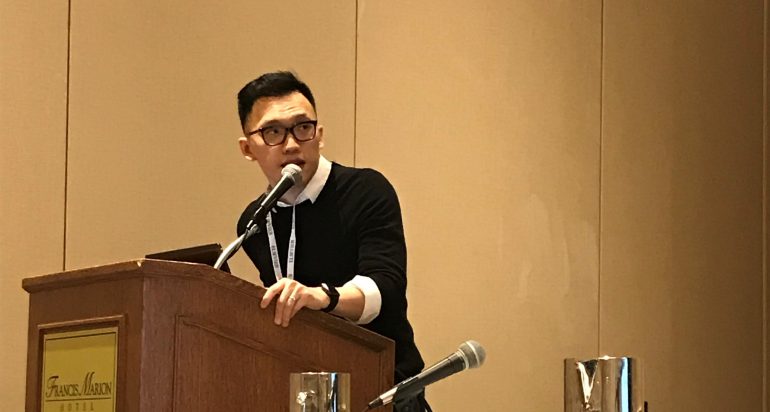Congratulations to Population, Health and Place Ph.D. student Li Yi on his presentation at the 2019 Active Living Conference in Charleston, South Carolina held from February 17-20, 2019. The Active Living Conference is the premier multi-disciplinary conference for sharing the latest research, policies and practices that advance activity-friendly communities and is one of the most prestigious conferences on physical activity and obesity research.
Yi’s presentation’s “Methodologies for integrating GPS, GIS, and accelerometry to construct momentary built environment contexts of physical activity: A systematic review” was during the February 20th session on “Data-informed design and planning,” one of 12 conference formal sessions.
As his research interest, Yi is investigating the integration of spatial sciences with physical activity and obesity research. He is particularly focused on how global positioning systems (GPS) can be combined with geographic information science (GIS) to study how daily contextual exposure to environmental factors such as air pollutants, the built environment and social contexts could influence physical activity behaviors and outcomes.
As background for Yi’s research, he examined how real-time location monitoring technologies such as GPS have been increasingly adopted to understand dynamic and continuous interactions between built environment characteristics and physical activity behaviors across space and time. Before performing statistical analyses that test their associations, researchers must construct momentary built environment contexts (MBECs) by integrating geo-locations, human-movement counts and GIS datasets. Yi aims to understand progress in constructing MBECs and how to advance the state of the art in these methods.
Yi synthesized 84 articles on MBEC generation using multiple indexes and key words as of July 2018. He revealed that major remaining challenges include inconsistencies in determining spatial parameters to depict environments around real-time activity data, poor depiction of temporal changes in the environments, and limited-use of real-time ecological momentary assessment in generating datasets. Yi argues that future studies should select MBECs construction parameters based on spatiotemporal variations of influences of built environment characteristics on physical activity and sociodemographic characteristics of the study population. Following his presentation, Yi participated in a panel discussion with the other presenters in this session.
Yi’s participation in the conference was funded in part by the USC Dornsife Spatial Sciences Institute (SSI), the home of the Population, Health and Place Ph.D. program at USC. Robert O. Vos, Assistant Professor (Teaching) and Director of Graduate Studies at SSI said, “We congratulate Yi on his successful presentation. We are very pleased to support ambitious Ph.D. students in connecting their work with the broader community of researchers and practitioners. The PHP program aims to develop future leaders at the intersection of demography, public health and spatial sciences. Thus we think it is key for students to attend such major international conferences that include both research and practice.”
Yi is currently working on two research projects with USC Reach (Real Time Eating Activity & Children’s Health) Lab that focus on impacts of maternal exposure to various environment factors and psychological responses on child obesity outcome. The projects collect GPS data of movement trajectories for both mother and child to help form better understandings of the patterns. Knowing how previous studies integrated GPS, GIS and accelerometer to study the relevant environment context and health behaviors is the first step to build on it to design their novel spatial method for their subsequent empirical studies. He anticipates that the work he shared at the Active Living Conference will form the basis of a chapter of his doctoral dissertation and will inform his doctoral research in next two to three years.




